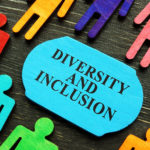We all need allies—and nowhere is that more true than in the cut and thrust of the workplace.
Executive Summary
"Allyship is not a short-term, quick-fix solution. You have to work at it constantly," write Angela Peacock, CEO of PDT Global, a consultancy focused on diversity and inclusion training. To help insurance professionals understand what allyship looks like, she describes five types of ally roles. Advising on how to keep allyship momentum going, even after D&I issues fade from news headlines, she floats the idea of making the active practice of allyship part of leaders' psychological contracts with their staffs. And if that fails, consider making it part of the actual employment contract, she writes.A workplace ally is an individual who is not a member of an underrepresented group but who takes action to support one or many such groups.
It could, for example, be men advocating for the advancement of women, white colleagues standing up for the rights of people of color, able-bodied individuals thinking about the needs of those with disabilities, or heterosexual employees creating a workplace free of homophobia and transphobia against LGBT colleagues.
When diversity and inclusion issues are in the news, there is no shortage of people from all walks of life and across the business spectrum keen to join in and wear a badge, attend a march, write a blog or speak out for underrepresented groups. But it’s often a different story once the headlines start to fade and it’s back to business as usual. That’s when the hard work starts for business leaders who are serious about having a diverse and inclusive workplace.





























